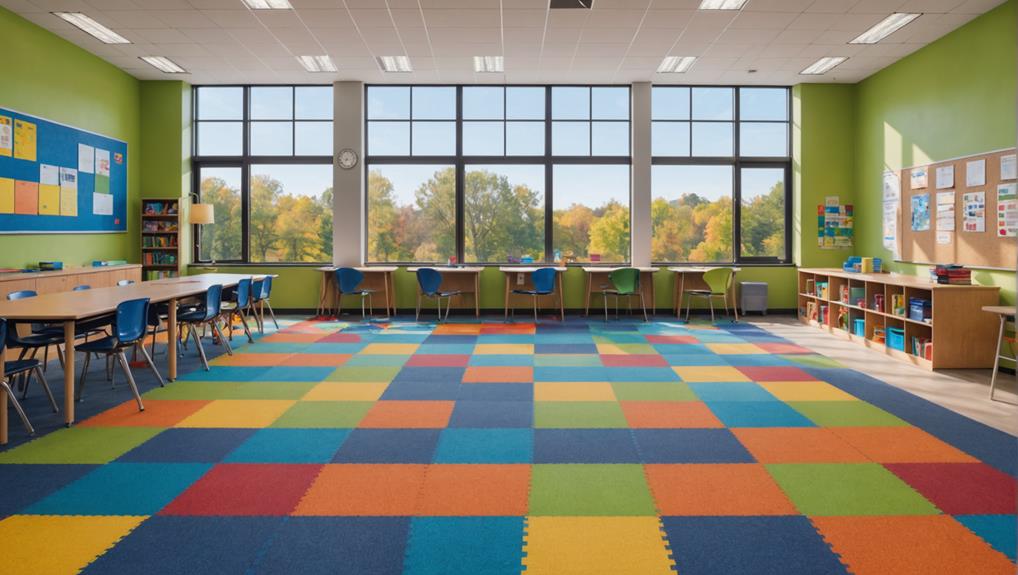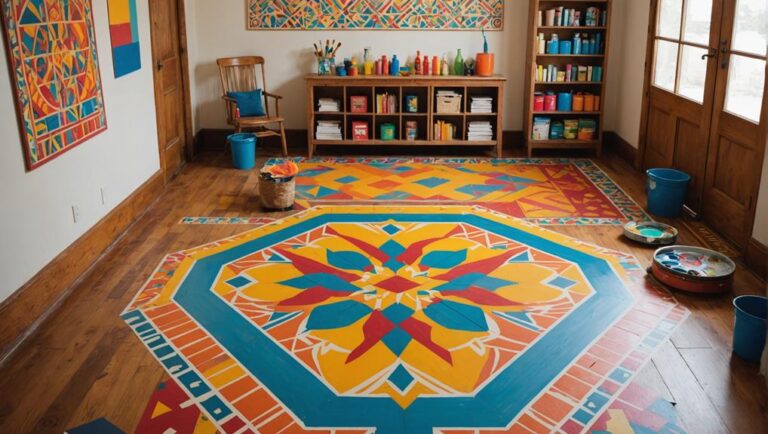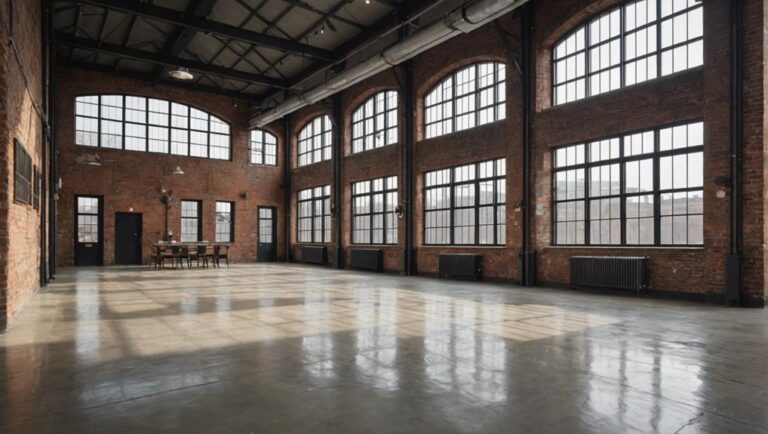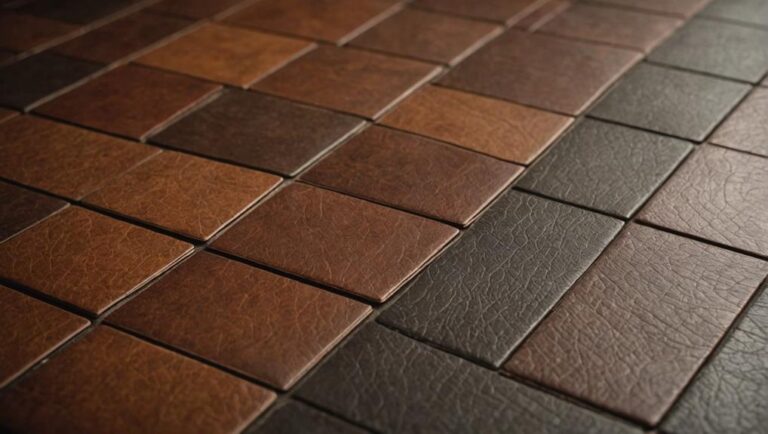When selecting flooring for educational spaces, think beyond looks. You want materials that enhance safety and functionality, like slip-resistant rubber or resilient vinyl. Consider carpet tiles or cork for classrooms to absorb sound and promote focus. Bright, engaging colors not only inspire creativity but also create an inviting atmosphere. In libraries, choose non-slip designs that support flexible furniture arrangements for collaborative learning. If you're eco-conscious, bamboo and reclaimed wood offer sustainability without compromising style. There's a lot more to explore about creating effective learning environments, ensuring comfort and efficiency throughout all educational spaces.
Benefits of Quality Flooring
When it comes to creating effective educational spaces, the right flooring can make all the difference. Quality flooring not only enhances the aesthetic appeal of classrooms but also plays a significant role in ensuring the safety and comfort of students and teachers alike. Imagine a space where slips and falls are minimized, allowing everyone to focus on learning without distraction. That's the promise of choosing the right materials.
One of the standout benefits of quality flooring is its cost efficiency. While initial investments might seem higher, durable flooring options often lead to long-term savings. They withstand daily wear and tear, meaning you won't be replacing them every few years. This durability translates to less frequent installations, saving you both time and money in the long run.
Additionally, consider maintenance ease. Quality flooring requires less upkeep, allowing your staff to spend more time teaching rather than cleaning. Many modern flooring solutions are designed to resist stains and spills, which is particularly beneficial in a bustling educational environment. With proper cleaning, these surfaces maintain their appearance and functionality over time, ensuring a safe space for learning.
When you prioritize quality flooring, you're not just making a choice; you're investing in an environment that supports safety, learning, and efficiency. It's a decision that pays off, ensuring that every step taken in your educational space is both secure and productive.
Best Materials for Classrooms
Choosing the best materials for classrooms can greatly impact the learning experience. You want to create an environment that's not only welcoming but also conducive to learning. One of the essential factors to evaluate is classroom acoustics. A noisy classroom can hinder students' ability to focus and absorb information. Opt for materials that dampen sound, like carpet tiles or cork flooring. These choices can greatly reduce noise levels, creating a serene atmosphere for learning.
When it comes to durability, you'll want to select durable surfaces that can withstand the wear and tear of daily classroom activities. High-quality vinyl or linoleum are great options; they're easy to clean and resistant to scratches and stains. This means you won't have to worry about spills or scuff marks affecting the aesthetic of your space.
Another important aspect to assess is safety. Choose materials that are slip-resistant and provide good traction, especially in areas where spills may occur. Rubber flooring is an excellent choice, as it combines durability with safety, offering cushioning that can prevent injuries from falls.
Lastly, don't forget about the visual appeal. Bright, engaging colors can inspire creativity and enthusiasm among students. So, as you select flooring materials, think about how they can enhance both the functionality and the overall vibe of your classroom. By prioritizing classroom acoustics and durable surfaces, you can create a safe, effective learning environment that encourages student engagement and success.
Innovative Designs for Libraries
Innovative library designs are transforming how we think about learning spaces, making them more than just repositories for books. Imagine stepping into a library that embraces interactive spaces, where students can collaborate, explore, and engage in hands-on learning. These libraries are reimagined with flexible furniture arrangements, allowing for easy reconfiguration as needs change. You'll find cozy nooks for quiet reading, as well as vibrant areas designed for group discussions and projects.
Acoustic solutions play a significant role in these designs. With the right flooring materials and wall treatments, noise can be effectively managed, creating a conducive environment for both concentration and collaboration. Think about using carpet tiles that not only provide comfort but also absorb sound, ensuring that conversations don't disrupt others.
Safety is paramount in these innovative spaces. Opting for non-slip flooring materials reduces the risk of accidents, especially in high-traffic areas. Bright, natural lighting enhances visibility and creates an inviting atmosphere, while clear signage guides users effortlessly through the space.
Incorporating technology is another hallmark of modern library design. Charging stations and interactive displays encourage users to engage with digital resources and improve learning outcomes. All of these elements combined create a dynamic space that's safe, functional, and inspiring—a true hub for discovery. So, as you think about your library's design, consider how these features can elevate the learning experience while ensuring a safe environment for everyone.
Safety Considerations in Hallways
While traversing hallways in educational spaces, it's essential to prioritize safety to guarantee a smooth flow of movement. The design and material of your flooring play a significant role in this aspect. One of the primary considerations is slip resistance. You want to confirm that students and staff can navigate the hallways without the fear of slipping, especially during inclement weather when wet shoes can become a hazard. Opt for flooring materials that are specifically engineered for high slip resistance; textured finishes can enhance grip and promote safety.
Another important factor is maintenance requirements. No matter how safe your flooring is initially, its effectiveness can diminish over time if not properly maintained. Regular cleaning not only keeps the hallways looking good but also removes dirt and moisture that can lead to slips. Choose flooring that's easy to clean and durable enough to withstand the daily foot traffic typical in educational settings.
Additionally, consider integrating visual cues into your hallway design. Bright colors or distinct patterns can help delineate walking paths, guiding students safely from one area to another. It's also worth thinking about the overall layout—make sure that the hallways are wide enough to accommodate large groups, especially during changes between classes.
In essence, combining slip-resistant flooring with manageable maintenance requirements creates a safer environment that fosters learning and movement. Prioritizing these elements will not only elevate safety but also enhance the overall experience within your educational space.
Eco-Friendly Flooring Options
When it comes to creating sustainable educational environments, eco-friendly flooring options can make a significant impact. Choosing the right flooring not only contributes to the health of the planet but also guarantees a safe and comfortable space for students to learn. You'll want to explore materials that are both sustainable and durable, assuring they can withstand the daily wear and tear of busy classrooms.
Consider bamboo flooring; it's a rapidly renewable resource that's naturally resistant to moisture and pests. Cork is another great option; harvested from the bark of cork oak trees, it provides a soft, cushioned surface that's perfect for active learning spaces. Both of these materials boast low VOC emissions, making them safer for indoor air quality.
Don't forget about recycled materials! Reclaimed wood or rubber flooring made from recycled tires not only adds character but also supports environmental initiatives. When it comes to installation techniques, look for options that minimize waste, like interlocking tiles or adhesive-free systems. These methods can help reduce environmental impact while assuring a secure fit.
Frequently Asked Questions
How Often Should Educational Flooring Be Replaced or Maintained?
You should consider replacing or maintaining your flooring based on its longevity and usage. Typically, a good maintenance schedule can extend its life, but you'll want to inspect it regularly for wear and tear. High-traffic areas may need more frequent checks. If you notice significant damage or wear, it's time to act. Prioritizing safety means addressing any issues promptly, ensuring a safe environment for everyone involved. Regular upkeep can save you costs in the long run.
What Is the Average Cost of Installing New Flooring in Schools?
When you're planning to install new flooring, it's important to take into account your installation budget. The average cost can range from $2 to $10 per square foot, depending on flooring materials like vinyl, carpet, or tile. Remember, investing in durable, safe options is vital for maintaining a secure environment for students. Don't forget to factor in installation costs and any necessary maintenance, as these will affect your overall budget in the long run.
Can Flooring Choices Impact Student Concentration and Learning?
Absolutely, flooring choices can greatly impact your concentration and learning. Think about color psychology; warm hues can energize the room, while cool tones promote calmness. Additionally, incorporating texture variety can enhance sensory experiences, making learning more engaging. You want safe, slip-resistant materials that also support these elements. By carefully selecting flooring, you create an environment that fosters focus and creativity, ultimately helping students thrive in their educational journey.
What Types of Flooring Are Best for Art and Science Classrooms?
Imagine vibrant splashes of paint against sleek, sterile lab surfaces. For an art classroom, use durable, easy-to-clean flooring like vinyl or rubber; they handle spills and offer comfort. In contrast, science lab flooring should be non-slip and resistant to chemicals, like epoxy or sealed concrete, ensuring safety during experiments. Balancing aesthetics and functionality, these choices not only inspire creativity but also prioritize a secure environment for every student's learning experience.
How Can Flooring Influence Acoustics in Educational Spaces?
Flooring can greatly influence acoustics in educational spaces. You'll want to take into account sound absorption when selecting materials. Soft, textured surfaces like carpets can help minimize noise, creating a quieter environment for learning. On the other hand, hard surfaces may amplify sound, which can be distracting. By prioritizing material selection that focuses on sound control, you'll foster a safer, more focused atmosphere for students, ensuring they can concentrate on their studies without excessive noise interference.




